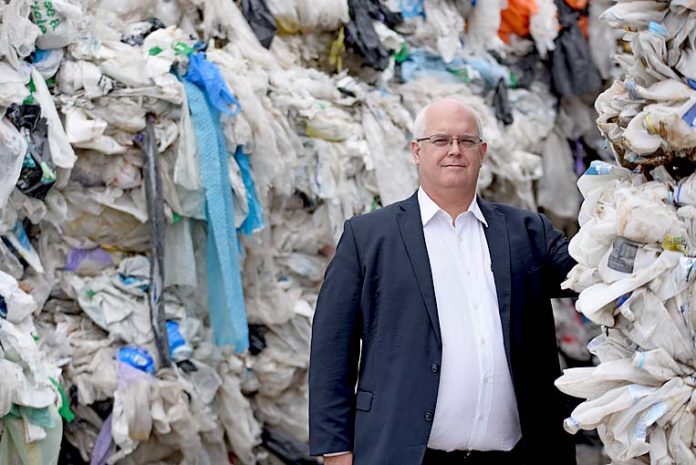

THE region’s local government sector is exploring avenues to redirect the region’s expanding recyclable stockpile into processing streams or other avenues.
Limestone Coast Local Government Association (LCLGA) – together with University of South Australia – has embarked on a unprecedented research study into possible uses for the region’s recyclable inventory.
The news comes as the Federal Government announces a $100m recycling investment fund to support manufacturing of lower emissions and energy-efficient recycled content products.
Despite a national push to improve people’s recycling habits, around 30pc of material thrown into Mount Gambier’s kerbside recyclable bins are contaminants.
These contaminated items include common household items and organic material such as pig heads and lobsters carcasses, which is continuing to create a headache for the city’s recycling operations.
Green Triangle Recyclers – which takes household recycling – has seen its stockpile at its depot reach nearly capacity amid the cardboard and soft plastics market collapse.
LGLCA executive officer Tony Wright – who toured the Green Triangle Recycables depot yesterday – said the region’s seven councils had come together to find solutions for the region’s recyclable issue.
“Councils are very interested in looking at products for roads. Naracoorte-Lucindale Council last year recycled 2600 rubber tyres for their roads. We also know glass and plastics are also being used successful in roads,” Mr Wright said.
“I think there is a big potential to use a lot of this material for roads.”
He said regional councils were ahead of the pack given they had already developed a regional waste management strategic plan and had attracted a grant to undertake research.
“This will look at the drivers and inputs to regional recycling and waste management and how we can take the outputs and use them in a local economic benefit,” Mr Wright said.
He said the initiative would explore both economic and research opportunities around reducing waste, recycling waste and developing an economic structure to drive sustainability.
“This work has already started and will be finished around May. This will give us a decent tool to start working on the economics.”
While the project was yet to be completed, he said the work could lead to the potential development of a processing facility, boutique facilities or expanding current facilities.
“There could be a whole range of options assessed,” Mr Wright said.
He said a solution to the region’s waste footprint must be found given a number of councils in the region transported their waste to Adelaide.
While a larger metropolitan-based facility may be more economical, he said regional-based processing facilities were also a possibility.
Mr Wright said the Chinese ban on Australian waste had seen the issue pushed to the forefront.
The local government leader said the community needed to improve in the area of consumption and recycling.
“We are on a planet with finite resources … it just makes sense to reuse as much as possible.”
While some councils in Australia had introduced additional recyclable bins for certain items such as glass, he said this was an issue for individual councils to consider.
Unveiling the federal initiative yesterday, Prime Minister Scott Morrison said he wanted to ensure Australia’s environment was protected for future generations.
“We have the best beaches, parks and rivers in the world and these measures support practical and meaningful activities that protect our environment and gets results,” Mr Morrison said.
“We will increase Australia’s recycling rates, tackle plastic waste and litter, accelerate work on new recycling schemes and continue action to halve food waste by 2030.”
Overall, the Federal Government will invest $203m to increase recycling and reduce waste, protect Australia’s unique threatened species and restore our waterways and coasts.







